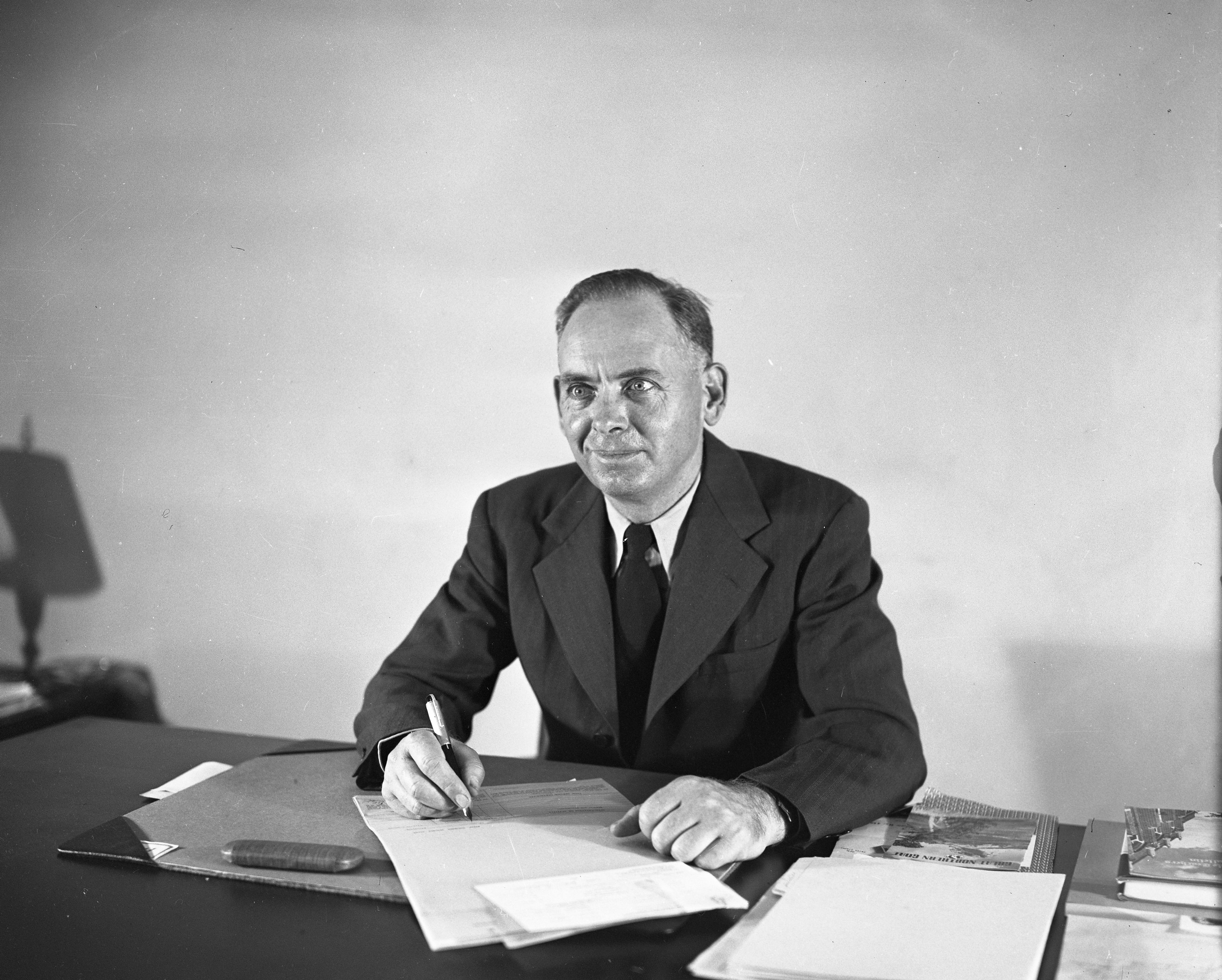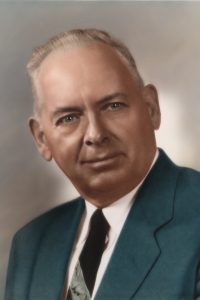
President Charles Sattgast
Constructed in 1962, Sattgast was built in honor of Dr. Charles R. Sattgast a steward of environmentalism at Bemidji State University. During his tenure between 1938-1964, Bemidji State expanded from a teachers college to one offering liberal arts and graduate studies. Additionally, the campus grew from 20 to 74 acres, making way for science, physical education, industry, arts and dormitory buildings.
Sattgast was born in Mount Vernon, Illinois on January 26, 1899. Before serving as President of Bemidji State, Sattgast served as president of Sioux Falls College from 1930-1937.
 In the early years of his presidency, enrollment was down near the 200s due in large part to World War II. By October of 1944, 360 students and faculty members, including Sattgast, were serving in the war. According to family records, Sattgast felt he needed to be a leader and join the many young Bemidji State students and faculty that were fighting for the country and took leave from Bemidji State in 1943. Dr. A.C Clark assumed the interim presidency in Sattgast’s absence.
In the early years of his presidency, enrollment was down near the 200s due in large part to World War II. By October of 1944, 360 students and faculty members, including Sattgast, were serving in the war. According to family records, Sattgast felt he needed to be a leader and join the many young Bemidji State students and faculty that were fighting for the country and took leave from Bemidji State in 1943. Dr. A.C Clark assumed the interim presidency in Sattgast’s absence.
While at war, Sattgast joined what is now known as the Monuments Men. These men were tasked with retrieving monuments and important historical items before a raid came through.
Dr. Sattgast returned home safely in 1946 and resumed his presidency at Bemidji State. He was a passionate environmentalist, saving trees on campus whenever he could, and spent his leisure time gardening and collecting edible mushrooms. Sattgast was referred to as “a dreamer and immensely honest.” President Sattgast passed in Rochester Minn. on March 24, 1964 while in office.
Sattgast Hall currently houses faculty and department/program offices for Biology, Chemistry, Geology, Physics, Earth and Space Studies, Economics, Sociology, and the Center for Environmental Studies. Additionally, it has a multitude of laboratories, animal rooms and a rooftop greenhouse.
Sattgast is to receive renovated faculty offices and renovated space to accommodate related math library, mathematics/GIS computer lab, and geography’s cartography and planning labs, along with upgraded technology infrastructure.
